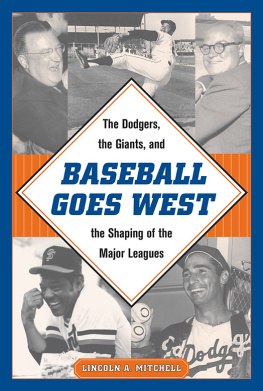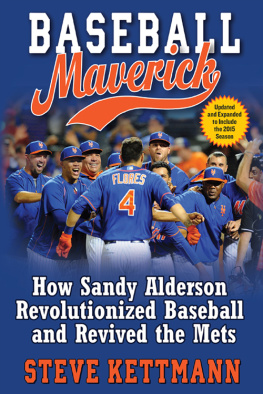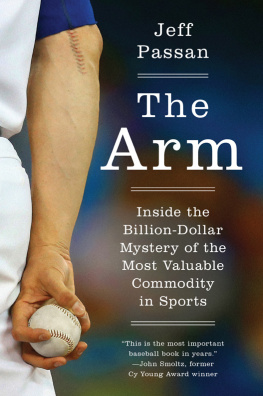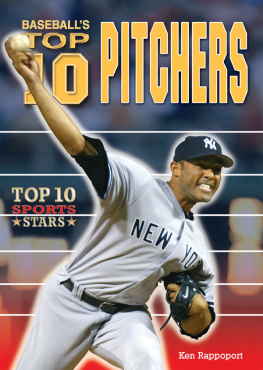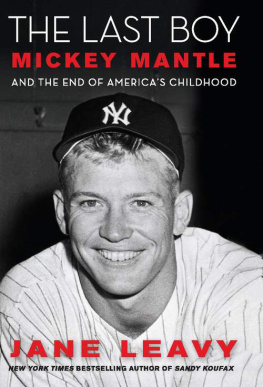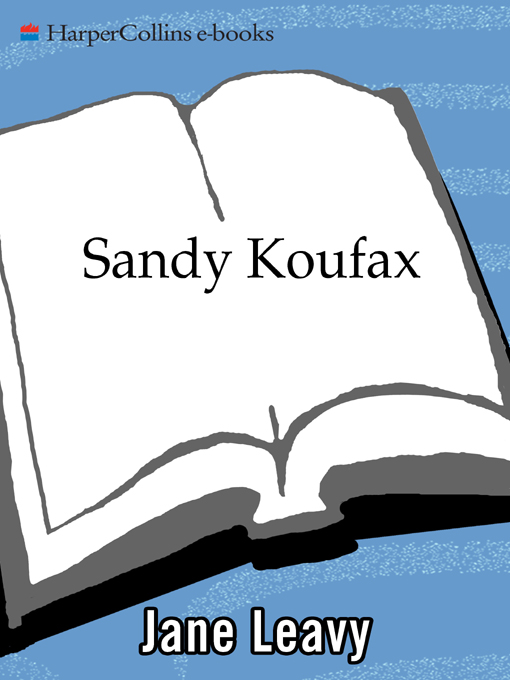I DIDNT GO TO THE L IBRARY OF C ONGRESS searching for Sandy Koufax.
I went for a poetry reading, in support of a friend. Also, there was the promise of free food. Sportswriters will go anywhere for free food.
I was just back from Fantasy Camp in Vero Beach, Florida, winter home of the Los Angeles Dodgers, where I first met Koufax and several of his former teammates. Clem Labine, an estimable pitcher in his own right, had tutored me in the physics of the Koufax curveball, explaining how he held the ball without his thumb, rolling it off his uncommonly long fingers with such velocity and spin that when the ball met the wind, the air cried.
I was attempting to demonstrate the proper grip to my friend Jane Shore, a poet who had not yet recovered from seeing Mike Mussina beaned on the mound at Camden Yards. An unexpected enthusiast exclaimed, Sandy Koufax? I devised Sandy Koufax.
Jane introduced me to Robert Pinsky, poet laureate of the United States. I was too unlettered to get his allusion and Pinsky was too polite to make a point of it. He turned to a student clutching a copy of his collected works and, borrowing the volume, opened it to page 86. The Night Game is a poem about sex and imagination, green grass and stadium lights that turn night into day. It is about the act of creation and new love, possibility. Koufax is not so much its subject as its solution. The solution to an emotion, Pinsky said.
Once, when he was young, Pinsky saw Sandy Koufax pitch at Ebbets Field. He doesnt remember much about the game. Just that it was night, that he sat along the third base line, that he knew who Koufax was. It was probably 1955, Sandys rookie year. Pinsky remembers the green of the grass and blue satin shimmering against the white flannel of Koufaxs shirt, and how the fabric wrinkled with exertion. He does not remember who won; whether Koufax started or relieved.
Years later when Pinsky was teaching writing at the University of California at Berkeley, someone sent him a poster of Koufax pitching: a study in kinetic sculpture, midway through his delivery, coiled and balanced on his back leg, his foot the only point of contact with the earth.
Pinsky hung the poster on his office door. In the arc and force of the pitchers motion, Pinsky saw everything he wanted his students to know about writing: balance and concentration; a supremely synchronized effort; the transfer of energy toward a single, elusive goal.
Pinsky is a sturdy man with a square jaw, a poet whose father was a catcher for the Jewish Aces, a New Jersey barnstorming team. Surrounded by his fans, people who dont confuse the poetry of baseball with iambic pentameter, he raised his arm above a tray of canaps, attempting to replicate the impossible angle of bone and ball just prior to release. You cant really do it, he sighed, lowering his arm. It was like a catapult. Elegance followed by violence.
I never saw Sandy Koufax pitch. My father, who grew up on Coogans Bluff rooting for the New York Giants, made me what I am today, a Yankee fan, by refusing to take me to Ebbets Field before the Dodgers left Brooklyn. I was probably the only Jewish kid in New York who didnt root for Koufax. I rooted for the gentiles in the Bronx insteada fate sealed by the proximity of my grandmothers apartment to the House That Ruth Built. I watched the world series from the second floor ballroom of the Concourse Plaza Hotel during High Holiday services. I went to synagogue to pray the Yankees wouldnt have to face Sandy Koufax.
Though I was a devoted subscriber to Life magazine, I dont remember seeing the August 1963 issue with him on the cover. It is an iconic, Norman Rockwell treatment. At age ten, I somehow failed to notice his importance. I was a Yankee fan first, a Jew second. I was assimilated. I did not feel compelled by Judaism to place him above baseball.
Twenty years later, I was covering the U.S. Open tennis matches for the Washington Post on the High Holidays. Deadlines were tight. I remember feeling pressured and something else, a discomfort in my own skin. I remember thinking, Sandy Koufax didnt pitch on Yom Kippur. I have not worked on the High Holidays since. Sandy Koufax had made himself at home in my soul.
In this I am not alone.
In Vero Beach, Florida, I met John Gentillon, a regular at Dodger Fantasy camp, who lived next door to him for a while in California. At a family reunion one day, forty of his tipsiest relatives, most of them female, spotted Koufax watering his trees and barreled down the hillside like a herd of elephants, screeching, Sand ee ! Gentillon was mortified. Koufax signed an autograph for each of them.
In the suburbs of New York, I found David Saks, a camper at Camp Chi Wan Da in 1953, who has been having recurring dreams about his bunk counselor, Sandy Koufax, ever since. In his dreams he gets to ask Koufax what so many others have wondered: How did you become that great? How did that happen?
In Manhattan, I met a woman named Shirley at the seventy-second anniversary gala of the Jewish Community House of Bensonhurst, where Koufax played on the 1951 National Jewish Welfare Board championship basketball team. A fleshy arm attached to a big voice and a firm grip took me by the wrist. You would like, maybe, to create a Jewish memory? I assured her I had plenty. So why are you here? Shirley said, disappointed. I explained my purpose, finding people who had known Koufax in Brooklyn. In an instant, she was dragging me across the ballroom, dodging vats of kosher dill pickles and mounds of chopped liver, bellowing at the top of her considerable lungs: Anybody here know Sand ee ?
Everything stopped. Mel Goldfeder, the event chairman, stepped forward. While he couldnt claim to know Koufax, they had spoken when Koufax telephoned his regrets. Goldfeder still hadnt gotten over it. He called me sir!
I have met Koufax collectors and Koufax completionists. In Washington, I was introduced to Michael Levett, whose youthful devotion to Koufax led to an adult passion for collecting the baseball card of every Jewish major-leaguer. (He has 128 of the 148 he covets.) In Philadelphia, I discovered Phil Paul, whose ambition is to acquire a ticket stub from each of Koufaxs 165 victories. So far, hes got 107, including all four no-hitters, the world series games, the record strikeout performances, and two one-hitters. Stubs cost him anywhere from twenty to forty dollars. A full ticket is double the price. My Holy Grail, the one game I really need is his first win, August twenty-seventh, nineteen fifty-five, Paul said. There were only ten thousand people at Ebbets Field. Paying customers that night: 7,204.
On a mountaintop in Southern California, I met Buzzie Bavasi, former general manager of the Dodgers, in his study overlooking the Pacific. Hes retired from baseball, but not from storytelling. In all my years in baseball, I never saved a thing, he said. About two years ago, I decided to get autographed balls from friends of mine, people I knew in the Hall of Fame. So I got twenty-two of them. Among them: Ted Williams, Joe DiMaggio, Stan Musial, Willie Mays, and Hank Aaron. Somebody broke in here. What do you think they took? One ball. Sandys. I never laughed so much in my life.





